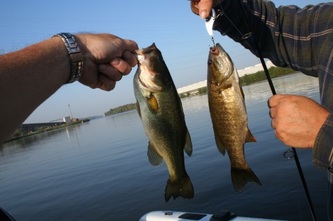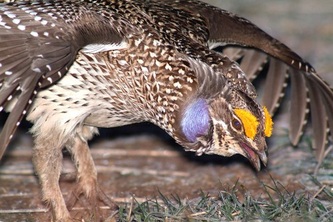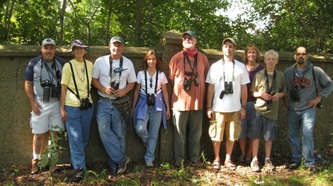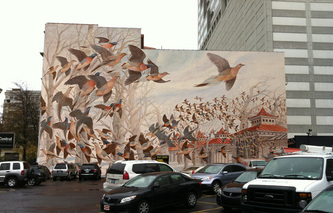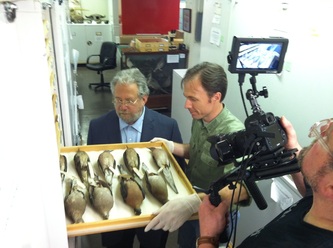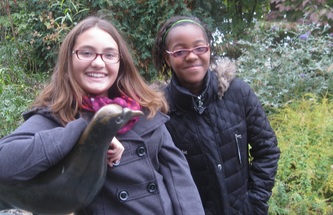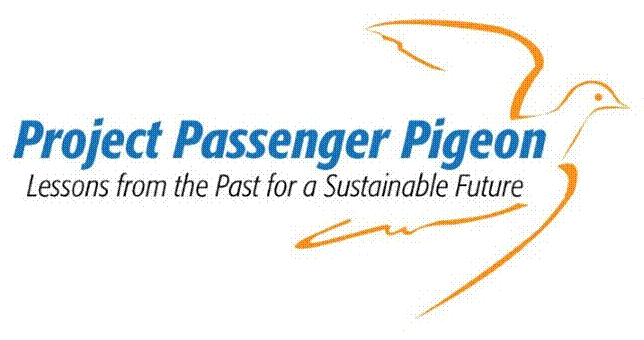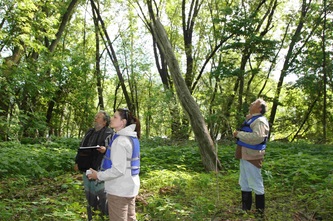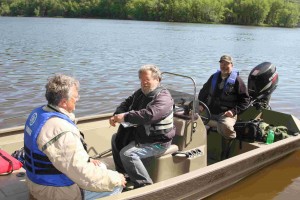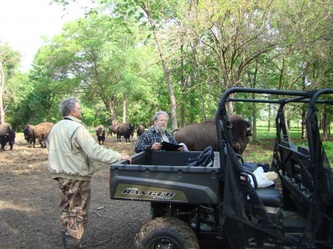Blog
Since May 2009, I have been the blogger on Sam Crowe's birding web-site, Birdzilla.com.
Read about my adventures here: Birdzilla.com
Read about my adventures here: Birdzilla.com
Film
One of the key elements of Project Passenger Pigeon has been the documentary that David Mrazek and I are making. David is an experienced and award winning film maker who came to me some years ago with idea of making a documentary on the local natural history. When I reached out to him about a passenger pigeon film he was quite interested and really became excited when he met all the people who assembled at the Peggy Notebaert Nature Museum in February 2011 to discus how the 2014 centenary of the pigeon's extinction should be marked. David interviewed many of the participants many of whom appear in the film. David led the Indigogo campaign that raised most of the funding we have to work with and he has been masterful in getting the most with that money. It also helps that he has a group of colleagues and friends who are extremely talented cameramen and editors who have agreed to participate at rates much less than they usually charge. The same applies to two superb composers who have let us use their original music for little of nothing. (We do want to raise some more funding to handle all of the post production so any contributions would still be valuable). Here is a link to the movie site, complete with trailer and means to contribute.
From Billions to None link
From Billions to None link
Delving into the historical natural history of the Midwest leads you to passenger pigeons. Humans have never known another bird like it: its abundance, huge aggrigations, and the speed with which humans drove it to extinction render it unique. I have long thought about writing a book on the bird and the realizations that the centenary of its extinction was approaching gave the project currency.
In the course of my research I learned that others were also aware of the centenary. Cindy Kerchmar (spouse) and I met with staff at the Cincinnati Zoo in April 2010 and about a month later with Deb Lahey, Steve Sullivan, and others at the Chicago Academy of Science's Peggy Notebaert Nature Museum. Over the following summer and fall there were a number of conference calls that eventually led to a meeting in February 2011 hosted by the Notebaert Nature Musuem. We drew maybe 25 people from institutions around the country (plus others who participated remotely) including Smithsonian Institute, Philadelphia Academy of Sciences, Cornell University, and Michigan State University. Out of that meeting was born Project Passenger Pigeon. I have been most responsible for four principal elements: web-site, Facebook, book, and documentary, as well as recruiting institutions and artists to participate.
Link to Project Passenger Pigeon website: passengerpigeon.org
Link to Project Passenger Pigeon Facebook page: Facebook
Follow on Twitter: Twitter
In the course of my research I learned that others were also aware of the centenary. Cindy Kerchmar (spouse) and I met with staff at the Cincinnati Zoo in April 2010 and about a month later with Deb Lahey, Steve Sullivan, and others at the Chicago Academy of Science's Peggy Notebaert Nature Museum. Over the following summer and fall there were a number of conference calls that eventually led to a meeting in February 2011 hosted by the Notebaert Nature Musuem. We drew maybe 25 people from institutions around the country (plus others who participated remotely) including Smithsonian Institute, Philadelphia Academy of Sciences, Cornell University, and Michigan State University. Out of that meeting was born Project Passenger Pigeon. I have been most responsible for four principal elements: web-site, Facebook, book, and documentary, as well as recruiting institutions and artists to participate.
Link to Project Passenger Pigeon website: passengerpigeon.org
Link to Project Passenger Pigeon Facebook page: Facebook
Follow on Twitter: Twitter
Bird Surveys at Prairie Island Indian Community
Prairie Island Indian Community is in Redwing, Minnesota. It consists
of hundreds of acres of woods, grasslands, marsh, lakes, and a section of the Mississippi River studded with islands. Andy Sigler and I
have been doing bird surveys with the PIIC biologists since 2009. We cover 72
points that represent all the habitat types twice a summer: we make the trip in
early June and then about a month later. The grasslands harbor a wide range of
sparrows including lark, grasshopper, and clay-color. (One section of
grassland/savanna holds a novel obstacle: we bird in the midst of a bison
herd.) A pair of nesting loggerhead shrikes have been the most unexpected birds
we have located. The islands, on the other hand, yield such local species as
prothonotary and cerulean warblers. A number of eagles nest as well and hearing
their screams over the more subtle warbler songs is an unusual experience. I
almost always write up each trip for a blog posting in June and July.
